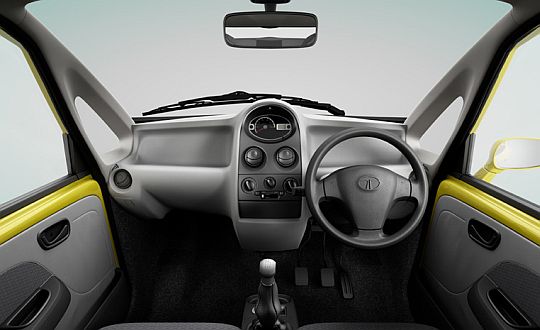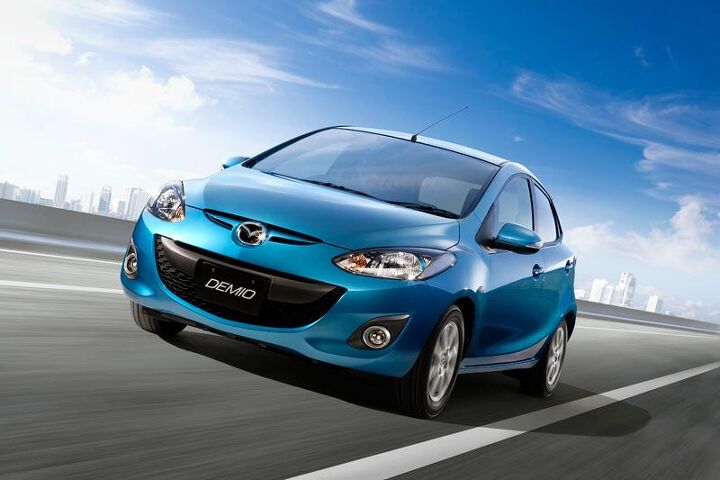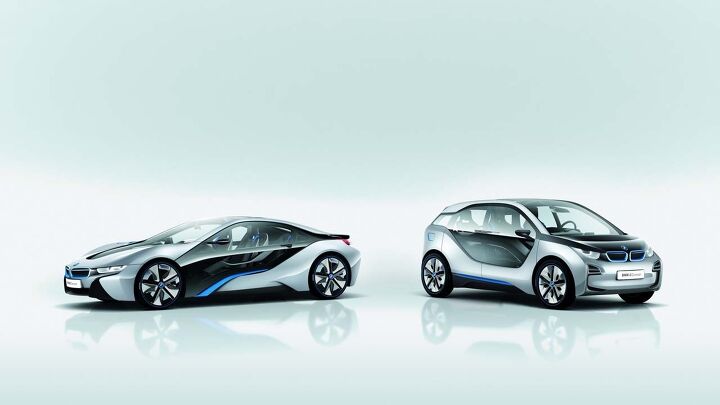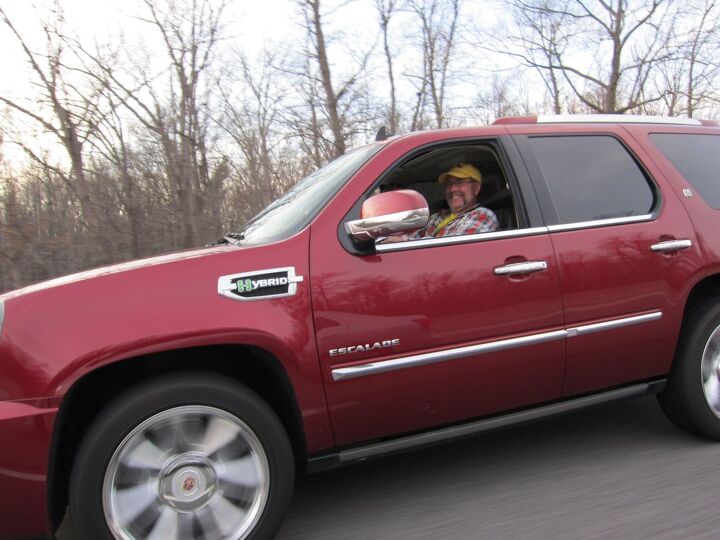#Hybrid
Hybrid Consideration On The Rise In Germany While Diesel Drops And EV Outlook Remains Weak
With US gas prices at some of the lowest levels in the world, it’s not too surprising that US consumers aren’t overly anxious to go electric, but what about in Germany, where gas prices are near double the US’s? According to Thilo Koslowski of Gartner Research, interest in EVs remains low there as well, and the big gainer in recent years has been hybrid technology… at the expense of the once-ubiquitous diesel, demand for which has “peaked” according to Koslowski’s research. Says the man who coined the term “ the trough of disappointment,”
Although the majority of German consumers continue to see EVs’ benefits in environmental and socioeconomic implications, broad adoption of EVs will remain low as long as current offerings don’t meet drivers’ practical usability and cost-saving requirements. To expand from early to mainstream EV adopters in Germany, automotive companies must focus on technology innovations, offer pricing strategies that are aligned with established premiums for diesel and hybrid powertrain options and develop diverse EV model mixes targeted at younger consumer segments that have higher EV interest levels than older demographics… E-mobility will become a viable addition to future transportation scenarios in Germany, but automotive companies and the German Government must address marketability requirements of EVs, prioritise technology investments and continue to promote cross-industry collaboration. Future mobility concepts will consist of diverse powertrain choices and business models that will leverage technology to satisfy consumers’ transportation needs while challenging traditional car ownership.
Flopping Tata Nano Prompts Talk Of Overseas Production, Styling Changes, Diesel and Hybrid Options
Tata’s Nano was launched with much fanfare in 2009, as the world’s cheapest car and a symbol of India’s automotive and economic aspirations. But first Tata had problems with its factory, which was to be built on land [allegedly] stolen from local farmers. Then, early last year, the cars started catching fire and refused to stop. Then finance was the issue, and when Tata revamped its finance, advertising and retail presence, it looked like things were beginning to improve. It turns out the bump was short-lived. After hitting 5k monthly sales last December, volume has fallen again dropping to 3,260 units in July (1/8th the volume of its main rival the Maruti Suzuki Alto) according to indiancarsbikes.in, which reckons
Startlingly, the most fuel efficient petrol car in the country, which is the most inexpensive too isn’t finding takers in a market troubled by high petrol prices and rising loan interest rates, that is clearly favoring cheaper and more fuel efficient cars… the market isn’t biting and the Nano sales have begun the downward spiral, this time continually.
So, what’s Tata going to fix to get its attempt at “India’s Model T” back off the ground. How about “everything”?
Mazda Is Cooking With Gas, Hates The Strong Yen
In an interview with The Nikkei [sub], Mazda’s President Takashi Yamanouchi mounted a spirited defense of the internal combustion engine. He said it won’t go away anytime soon. He thinks the ICE will remain a mainstream option, especially in emerging markets. As proof he points to the recently launched Demio subcompact, which gets similar mileage as a Honda hybrid.
Yamanouchi does not believe that hybrids or EVs will make a huge dent into the market, especially not in the emerging markets, where money is tight.
“The size of the global auto market is now at roughly 60 million units, but it will top 100 million sooner or later. Though we factor in opinions from outside the industry, the share of hybrid and electric cars in the global market will probably not exceed 5% in 2020. That means gasoline-powered cars are expected to continue to dominate the market.”
I, BMW
What Happened To Hybrid Kinetic Motors?
Remember Hybrid-Kinetic Motors, the hugely ambitious venture by former Brilliance Chairman Yung Yeung that was supposed to build 300k physics-defying hybrids per year at a brand-new $1.5b Alabama factory (with the modest goal of producing a million vehicles per year by 2018)? H-K Motors was never taken very seriously here at TTAC, and despite appearing to be a visa scam, the firm signed a $500m design deal with Italdesign/Giugiaro, and was reportedly working with a German engineering firm… and Alabama’s Baldwin County sure took the firm seriously. Unfortunately, al.com reports that
In 2009, Chinese company HK Motors had taken notice of the megasite and announced plans to build a $4.36 billion green energy automobile manufacturing plant that would employ 4,000 workers.
Under a plan unveiled two years ago, the Pasadena, Calif.-based subsidiary of Hybrid Kinetic Group Ltd., of Hong Kong, would start production in Baldwin County in 2013. The cars built there would run mainly on compressed natural gas, backed up by electric batteries and a small gasoline tank.
The company announced that it expected to build 300,000 vehicles each year at the outset, with production increasing to 1 million by 2018 by 5,000 local employees. The company purchased a battery manufacturer and other component businesses in subsequent months.
But local officials said last month they would be marketing the site to other companies with HK Motors apparently unable to secure financing for the venture.
I’m sure nobody’s surprised by this at all… after all, I never found anyone who believed a word of the Hybrid Kinetic mumbo-jumbo. But what reminded me of the H-K fiasco, and what led to me to find that it had officially abandoned Baldwin County (after it shouldered $70k in surveying costs, no less) was news that a hybrid van manufacturer is setting up shop in St Louis, which has lost Ford and Chrysler plants. What reminded me of the H-K situation? “Emerald Automotive Limited,” which is promising 600 UAW-represented jobs and gas- and diesel-electric delivery van production by the end of next year, doesn’t have a freaking website. That’s never a good sign…
The Truth About Green Patents
Research into environmentally sensitive ways of running a car, AKA “green patents” have been in the news lately and it’s been good news for GM’s image. The Detroit automakers in general are not seen as technology leaders, particularly in terms of alternative energy. Bob Lutz saw the Chevy Volt as a way of changing that perception, taking away some green luster from Toyota. Since there is usually considerable time between a patent’s filing and its granting, patents granted in the last 2 or 3 years are a good reflection of what a company has been doing for the past 4 or 5 years, and there’s evidence that Lutz’s strategy was not just a PR job but also a reflection of a very large amount of research and development at the automaker. Cleantech Group, of the Heslin Rothenberg Farley & Mesiti intellectual property law firm, publishes the Clean Energy Patent Growth Index. The CEPGI tracks the granting of U.S. patents for solar, wind, hybrid/electric vehicles, fuel cells, hydroelectric, tidal/wave, geothermal, biomass/biofuels and other clean renewable energy. The law firm publishes the CEPGI quarterly and then tabulates the annual results.
Toyota Hybrid IP Under Attack Again
Over the last several years, Toyota has fought off suits by a firm called Paice, which claimed to own patents on technology used in Toyota’s hybrid drivetrains. Toyota settled that dispute a year ago, but now Bloomberg reports that another firm is going after Toyota’s hybrid Intellectual Property (IP). According to the report
Efficient Drivetrains Inc., based in Palo Alto, California, has an exclusive license from the University of California for use of the technology, including the way electricity is drawn from a battery to power an electric motor and an internal combustion engine, according to a July 20 federal court complaint filed by Toyota in San Jose… The five patents at issue also include technology, invented by EDI co-founder Andy Frank, on ways to control the power output of an internal combustion engine and a method to draw electricity to operate the electric motor and the internal combustion engine, together or separately depending on driving conditions
You can read Toyota’s complete filing here.
How Can A Small Hatch And Supercar Share Design?
BMW’s forthcoming “i” series of high-efficiency vehicles will launch as a two-vehicle brand, spanning the gap between high-end hybrid supercar (i8) and small, premium, rear-drive electric hatchback (i3). So, how can BMW style two such divergent vehicles in such a way that both fit into the same brand? That’s the subject of this video, which previews some of the design cues that mark these cars as BMWs, but also as “i-cars.” And if you’ve forgotten what an “i car” is (something BMW doesn’t want anymore than people forgetting what an “M Car” is), hit the jump for a brief video refresher…
GM Plans Opel Flagship As "Technological Spearhead" (Or XTS Rebadge?)
With Opel planning to pull itself into the black within the year, the brand’s thoughts are turning from survival to “luxuries” like a flagship model planned for around 20k units starting in the 2016-2017 timeframe. Codenamed “TOL” for “Top Of Line,” the sedan will be designed to highlight one of GM’s many alt-drivetrain technologies, but according to Automotive News [sub], nobody yet seems sure which. Opel labor rep and recent champion of the brand’s forthcoming products Klaus Franz explains:
Already with the our Ampera electric vehicle, we have shown what we are able to do and enjoy an advantage of two to three years compared to the competition
But with the TOL is planned for 2016, Opel may have to dig deep to jump out ahead of the market, which is why a fuel cell-powered electric drivetrain is being considered (also, after decades of FCV research, GM has to build a production model someday). And if the eventual product has a truly ahead-of-its-time drivetrain, and looks as good as last year’s Flextreme Concept (above), this flagship could be an exclamation point on Opel’s turnaround. Unfortunately, neither of these things are a given…
California Cuts Green Car Incentive In Half
California has backed up its strict emissions standards for years now with a $5,000 tax credit for electric, hybrid and fuel cell vehicles, which when combined with a $7,000 federal tax credit can often make those vehicles nearly as affordable as “regular” cars. But, reports Automotive News [sub], that state credit has fallen victim to California’s budget woes and oversubscription, and has been cut in half from $5,000 to $2,500. According to the report:
high demand exhausted the program’s funding last month. The Los Angeles Times reported Thursday that about 500 consumers who bought electric cars such as the Nissan Leaf or Tesla Roadster are on a waiting list and will collect the $2,500 rebate.
To deal with growing demand, the pool of money to fund the rebates was increased to between $15 million and $21 million for CARB’s current fiscal year ending June 30, 2012, according to CARB’s announcement. A total of $11.1 million was allocated in the program’s first two years, according to CARB spokeswoman Mary Fricke.
The increased cash pool and lowered rebate amount are aimed at making the incentive available to more consumers, according to CARB’s Web site. The changes are projected to fund about 6,000 rebates for consumers who apply for the program on a first-come basis, Fricke said.
Now California “green car” intenders not only get a reduced tax credit, but they also don’t get free access to the HOV lane anymore. It’s almost as if California wants “green” vehicles to succeed or fail on their own terms…
"Super Credits": The CAFE Loophole That Might Have Been (And Could Be Again)
The Michigan Congressional delegation’s letter, stating that the Detroit-based automakers are not technologically capable of serving the market while complying with a proposed 2025 CAFE standard seemed strange to me in light of the recent progress made by Ford and GM on fuel economy. Why, I wondered, would these firms boast of their fuel econmy efforts on the one hand while allowing their congressional representatives to portray them as unable to build a CAFE-compliant fleet on the other. Why, I wondered, don’t Ford and GM come out and angrily insist that they can build the most fuel efficient cars in the world? My guess: because they know that they can probably wheedle a loophole out of the feds if they keep pleading inability. Yes, everyone knows they can comply with CAFE… but even the UAW knows that when the government asks you to do something, you ask for something back. Which in turn made me wonder: what might the OEMs want? And, turning to the 2012-2016 CAFE Final Rule [go on, give it a read in PDF format here], I found a glaring loophole that all the manufacturers seemed to want, but which the feds turned down. I have no evidence that this is back on the table for 2017-2025, but I thought I’d put it out there to give a sense of what the OEMs may be pushing for by pleading inability to comply with the proposed 2025 standard.
New or Used: Mind Reading and Wagon Lust
Mark writes:
Hi Guys,
I read TTAC regularly and am debating what to do about getting a new car. The situation is I had a 2001 Volvo S60 which started experiencing transmission “issues” that the mechanic could not replicate, so I traded it for a 09 Fit to get better mileage. The Fit was an excellent appliance car, but felt a bit tinny after the relative comfort and solidity of the S60. The new Lexus CT200h got me excited and my sister-in-law needed a new car so I sold her the Fit and am awaiting the Lexus. However it appears that actually fitting my kids in the back of Lexus won’t work. What would you suggest as a car? I want good mileage, because I have a city commute, a bit of luxury and reliability with not ridiculous repair costs. I had hoped the Mercedes C300 Estate would come here, but it won’t and BMW has me concerned about repairs costs. Could I be happy with a used Lexus SportCross? Please provide your perspective.
2011 Chevrolet Volt: Take Three
Truth seeking is difficult considering the controversy, misinformation and flat-out lies surrounding the Chevrolet Volt. But this is a product with set attributes, some are better or worse than our collective expectations. The performance reminds me of live music: everyone has an opinion as to how much it rocked. And the Chevrolet Volt is Jimi Hendrix on wheels: an American likely to influence popular culture for decades after leaving the limelight. But more importantly, like the influences of jazz and blues in Jimi’s work, the Volt combines Detroit’s future with memorable elements of the past. It’s true.
Where Are Our Green Car Priorities?
As a relatively pragmatic person who generally chooses the imperfect-yet-achievable path rather than agonizing over the perfect-but-unattainable goal, this chart [from a fascinating Boston Consulting report, in PDF here] frustrates me. I understand why Americans choose hybrid-electric cars as their most favored “green car” technology, but from their it gets fairly crazy. EVs are fantastic on paper, but in the real world they’re still far too expensive, their batteries degrade, they have limited range, oh and did I mention that they’re freaking expensive? Biofuels, America’s third-favorite “green” transportation technology can be fantastic in certain limited applications, but the ongoing ethanol boondoggle proves that it will never be a true “gasoline alternative.” Finally, at the bottom of the list, Americans grudgingly accept only relatively slight interest in the two most promising short-term technologies: diesel and CNG. Neither of these choices is radically more expensive than, say, a hybrid drivetrain and both are considerably less expensive and compromised than EVs at this point. So why are we so dismissive of them?
Review: 2011 Cadillac Escalade Platinum Hybrid
A couple months back, Cadillac gave me a bright red, three-ton, rollin’-on-22s, chrome-drenched, hybrid-electric, $88,140 luxury truck to drive while in Michigan for the Campaign To Prevent Gingervitis 24 Hours of LeMons. Since that time, the effort of attempting to write a meaningful review for this ridiculous-yet-amazing machine has caused my brain to develop a severe rod knock. Who is supposed to buy this thing? I asked myself. What can you do with it?























Recent Comments